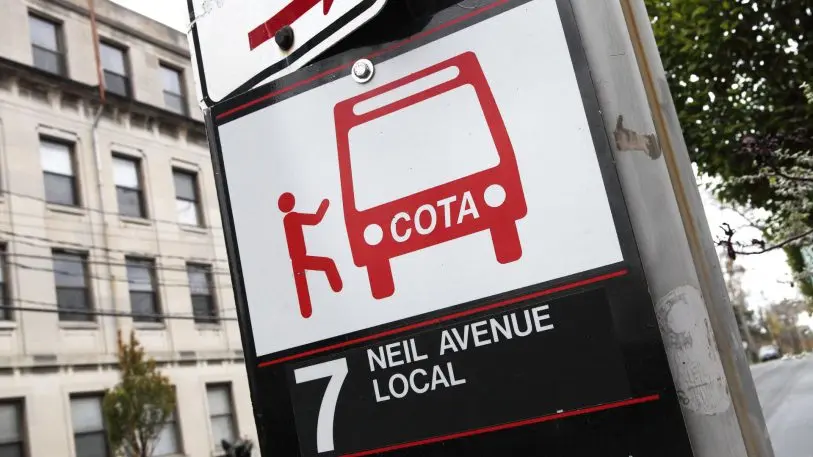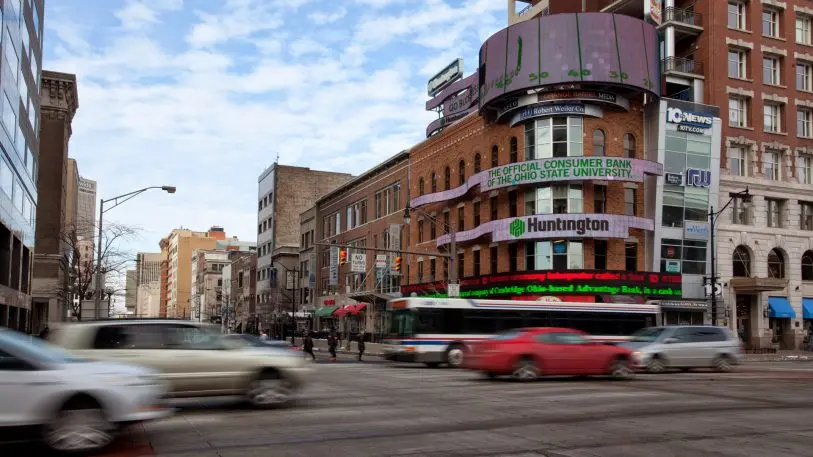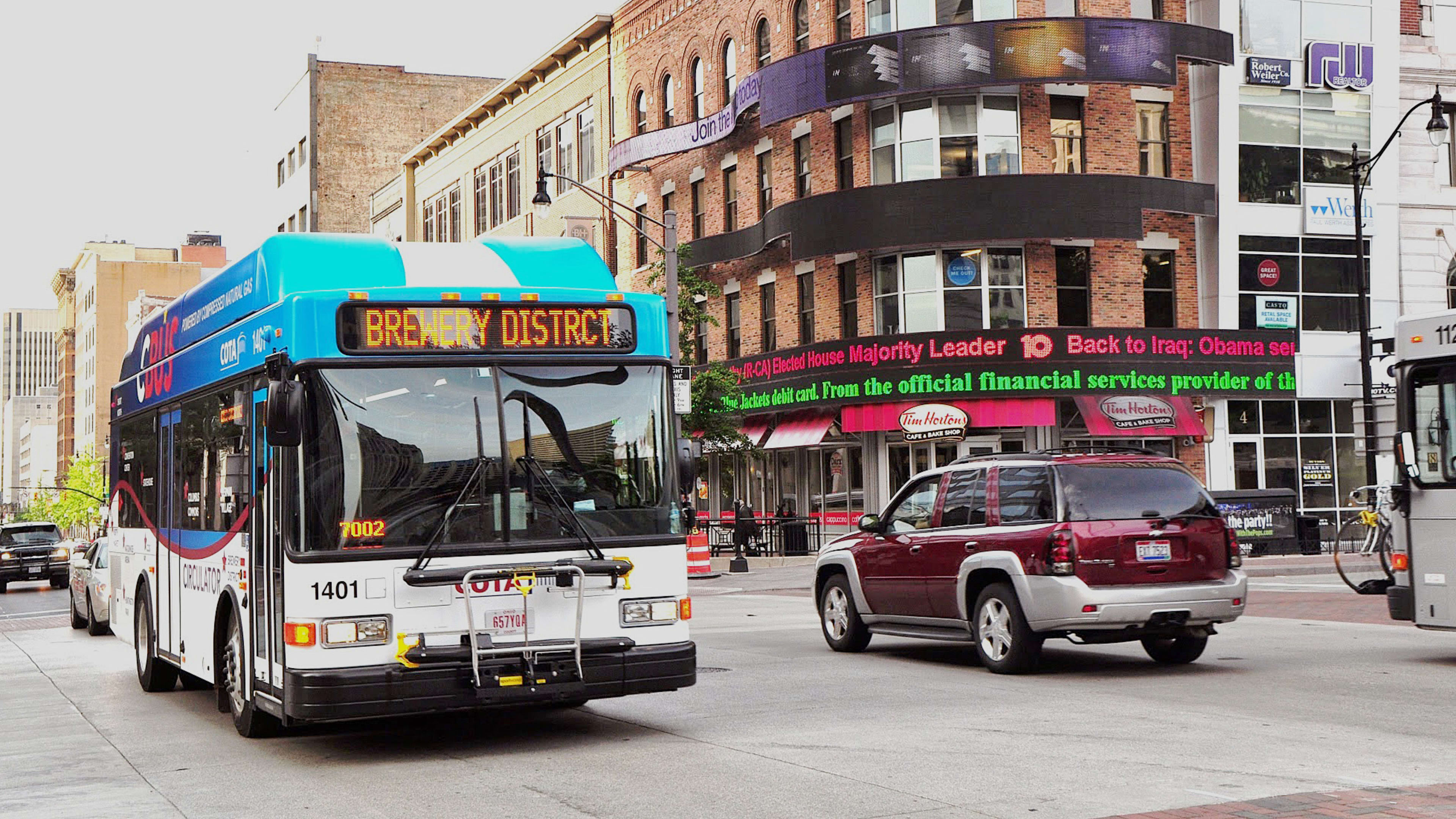When a group of property owners in downtown Columbus, Ohio realized that they were running out of parking spaces for car commuters–to accommodate demand, they’d have to build around 4,000 new spaces–they made a choice. Instead of pushing for new parking garages, they’d try to convince fewer workers to drive by giving them free public transit.
Beginning in June 2018, the Capital Crossroads Special Improvement District, an association funded by downtown property owners, plans to offer free bus passes to more than 40,000 people who work in the area.
Over the last several years, many parking lots in downtown Columbus have been replaced by new residential developments. At the same time, the number of people driving to work alone has increased, leaving so few available parking spots that companies have been reluctant to rent office space in the neighborhood.
“Office brokers first started calling us about this problem about four or five years ago,” says Mark Conte, deputy director of Capital Crossroads. “We’ve now lost an additional 2,000 parking spaces. An office broker would call and say, ‘Hey, I’m working on a deal, can you find me 50 spaces? And our answer would be ‘We can’t.'”

Right now, most workers in Columbus drive. In 1990, around 70% drove alone to work; by 2010, that figure was 82.6%. For each 100 workers in the downtown area, there are 87 cars, more than any other mid-sized city downtown apart from Indianapolis (Houston, for example, which is also known as a car commuting city, has 78 cars per 100 downtown workers).
Despite the culture of driving, workers were receptive to the pilot. When Erica Taffany started a new job at in 2015 at the law firm Porter Wright, one of the companies participating in the pilot, she was convinced to try commuting by bus for the first time. “The parking wait list for any garage in the downtown area was about six months long,” she says. “So I thought, instead of paying an exorbitant amount to park 20 blocks away, I may as well just try riding the bus.” After the pilot ended, she bought a bus pass and continued to ride (she recently started driving temporarily because she is pregnant and close to her due date).

Some companies that offer subsidized or free parking may eventually phase that out; charging for parking is a proven way to quickly decrease the number of commuters who drive. “I think some companies will do that, but I doubt any companies will admit to it right now,” he says. “Once you give a benefit, it’s hard to take it away. What I think would be ideal is that when companies are able to offer this transit benefit, that might be the time that they can then take a look at how much parking they do subsidize…It depends on the company and who their workers are, and what the competition is for those workers. So a company who’s attracting a lot of young people that are living downtown or in the central city area, I think those people are going to be more apt to look at transit and biking options, and not care as much about a parking benefit.”
The association expects to see a series of benefits. Because employees will be able to get to work more easily, more employers will be interested in moving to the area, decreasing the office vacancy rate from around 15% to a projected 4%. Air pollution will improve: the county earned a failing grade this year from the American Lung Association for smog, and the rate of childhood asthma is double the national average, at 15.8%. In a year, the program should also help avoid more than 10 million pounds of CO2 emissions.
The bus passes are also meant to help lower-income workers. Nearly a fifth of employees in the area earn less than $25,000, the county’s living wage, and struggle to afford to get to work. Some employers, such as hotels, are struggling with high turnover as a result. The passes could change that.
If the program is a success, it’s likely to continue long-term. Property owners will cover about half of the $5 million initial program, and grants and donations will cover the rest. The passes will be subsidized by the local transit agency, a partner in the program. Ultimately, property owners may fund the whole program themselves.
Recognize your brand’s excellence by applying to this year’s Brands That Matter Awards before the early-rate deadline, May 3.
